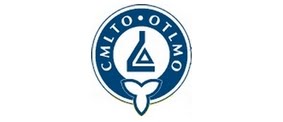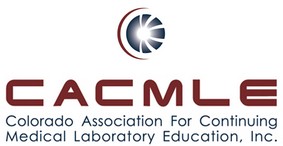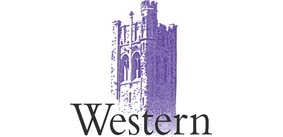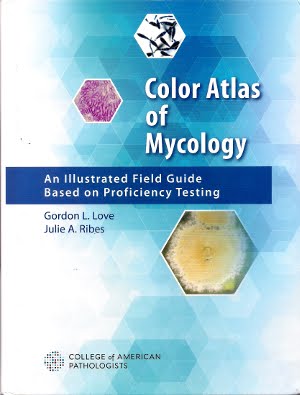Mycocladus
corymbifer (formerly Absidia
corymbifera)
Lichtheimia corybifera complex (formerly Absidia corymbifera) Fungus
(Names seem to change monthly!!! - your choice!)
Absidia corymbifera;
I’m going to refer to this organism throughout this post by its former name, “Absidia” corymbifera as most are still unfamiliar with the change in nomenclature.
Pathogenicity:
Although uncommon, Absidia species have been implicated as an agent of human (sub)cutaneous mycosis as well as opportunistic pulmonary infections. As with other fungi previously considered to be relatively benign, they are now being isolated with greater frequency particularly in immunocompromised patients (AIDs, transplant patients, neutropenic patients, etc.) Absidia corymbifera is considered to be the only species of Absidia that is recognized as a human pathogen. Absidia corymbifera occasionally has been known to cause mycotic abortions in cows.
Ecology:
Absidia species are ubiquitous in nature and can be isolated from soils and decaying vegetation. As such they may be found as contaminants in cultures. Care must be taken in determining their significance when isolated.
Macroscopic Appearance:
Colonies grow rapidly, maturing in 3 – 4 days. They are white to a greyish-brown in colour with a woolly texture also described as resembling ‘cotton candy’. Reverse is uncoloured and non-descript. Absidia species are inhibited by cycloheximide and therefore will not grow on media such as mycosel. Maximum growth temperature for Absidia corymbifera is between 45 – 52oC. Absidia corymbifera is thermophillic in that it grows more rapidly at 37oC than at 25oC accounting for its human pathogenicity (body temperature). Most other Absidia species fail to grow at 37oC.
Absidia corymbifera on SAB media after 4 days incubation at 30oC
(Reverse not shown - rather nondescript colourless)
Microscopic Morphology:

Absidia’s hyphae are aseptate (rare septa) and relatively wide at 6 – 15
µm in diameter.
Absidia species resembles
Rhizopus species however the distinguishing feature is that the sporangiophores of Absidia arise from locations on the stolon that lie
between the rhizoids and not
from them.
In other words, there is no rhizoid directly below the sporaniophore as would be observed in
Rhizopus species.
Sporangiophores arise alone or in groups from the aerial hyphae and are rather long (up to 450 µm). Sporangiophores branch and widen apically where they form a conical apophysis immediately below the columella. Sporangia are about 20 – 90 µm in diameter are spherical to pyriform in shape. When mature the sporangial wall dissolves releasing round to oval (3 – 5 µm) sporangiospores leaving a small collarette where the apophysis and sporangium had met. Zygospores have been described.
Note: Apophysomyces elegans resembles Absidia corymbifera but produces white colonies and fails to sporulate on routine clinical laboratory media.
Young slide culture Absidia corymbifera X100 LPCB
(Click on any photo to enlarge for better viewing)
Absidia corymbifera - Structures seen; (LPCB X100)
- Rhizoid
- Sporangiophore arises from stolon between rhizoids and not directly from a rhizoid though this appears to be more of a branch in this photo. Rhizoids were a bit of a challenge to find on this particular organism.
- Sporangiophore
- Sporangium
Ditto (LPCB X100)
Rhizoids were rather difficult to detect. Adhesive tape preparations failed to capture any. I suspect they were so well anchored to the media that the sporangiophores broke off from the stolon rather than pulling the stolon and rhizoids out with it. This photo was taken from a slide culture preparation where some of the agar media surrounding the rhizoid was removed along with the stolon and sporangiophore.
Numerous sporangia with loose sporangiospores are pictured. Notice that the sporangiophore widens apically where it becomes the columella and supports the sporangium. (LPCB X400)
Ditto
Absidia corymbifera sporangium filled with sporangiospores. (LPCB adhesive tape preparation X400 + additional 1% digital magnification)
More views of the same. Apophysis structure can be seen in dissolving sporangium on left. (LPCB X400)
Ditto

Sporangium dissolvingé breaking up releasing Sporangiospores
(LPCB X400)

Apophysis with remains of Collarette and a few remaining Sporangiospores.

More views of same - Stolon with branching sporangiophores bearing Sporangia in various stages of releasing Sporangiospores. Apophysis can be visualized on Sporangiophore at upper left. (LPCB X 400)

Dissolving sporangium releasing numerous sporangiospores with remaining apophysis on apical end of sporangiophore. (LPCB X400)
 Absidia’s hyphae are aseptate (rare septa) and relatively wide at 6 – 15 µm in diameter. Absidia species resembles Rhizopus species however the distinguishing feature is that the sporangiophores of Absidia arise from locations on the stolon that lie between the rhizoids and not from them. In other words, there is no rhizoid directly below the sporaniophore as would be observed in Rhizopus species.
Absidia’s hyphae are aseptate (rare septa) and relatively wide at 6 – 15 µm in diameter. Absidia species resembles Rhizopus species however the distinguishing feature is that the sporangiophores of Absidia arise from locations on the stolon that lie between the rhizoids and not from them. In other words, there is no rhizoid directly below the sporaniophore as would be observed in Rhizopus species. More views of same - Stolon with branching sporangiophores bearing Sporangia in various stages of releasing Sporangiospores. Apophysis can be visualized on Sporangiophore at upper left. (LPCB X 400)
More views of same - Stolon with branching sporangiophores bearing Sporangia in various stages of releasing Sporangiospores. Apophysis can be visualized on Sporangiophore at upper left. (LPCB X 400)












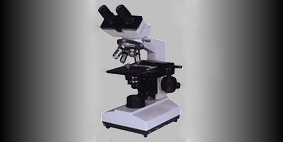.jpg)
